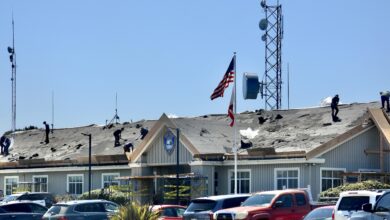FBHS ranks high in U.S News survey
Solid learning by minority students at Fort Bragg and Anderson Valley high schools helped boost both into the top tier of a nationwide school survey.
Fort Bragg and Anderson Valley earned Silver Medal status in a U.S. News World and Report nationwide survey.
The survey, while good news locally, brought terrible Christmas tidings to California schools in general, which did the worst of any state overall, according to online information.
“We are, of course, proud of the accomplishment and along with the NCS Championship for the football team, it proves a small rural public school can still reach for the top,” said Fort Bragg Unified School District Superintendent Don Armstrong.
U.S. News considered 18,743 schools before picking a top 100 as Gold Medal winners. There were just 561 Silver Medal winners, or 3 percent of the total analyzed.
The Mendocino County schools were two of only six schools defined as being in remote rural areas (as well as being two of only six from the Golden State in the silver category).
Figuring out why the local schools did so well wasn”t as easy for reporters or school officials.
The numbers originate from a supercomputer database analysis of demographic data ranging from the U.S. Census to high school students” success with college to the California API test (Advanced Placement Index).
“Like most formulas, it is a bit difficult to understand and while I have read the entire article I am still unclear on how the numbers are arrived at,” said Armstrong.
One thing that was clear was that the high ranking for FBHS stems from test scores that are above state averages. More importantly, they were much more even across lines of race and poverty than most other schools.
“The ranking is derived from a formula where they look at what is expected of you in terms of your at-risk population (socio-economic disadvantaged, English learners, minorities, etc.,) and your actual results. In a nutshell, we do a good job of sending our Latino and economically disadvantaged students to graduation and college.”
The rankings show that 55 percent of Fort Bragg High students are economically disadvantaged (poor) and 33.5 percent are Hispanic. Many rural high schools in California, from Yreka to Colusa, have similar demographics but the test scores are generally lower overall and the gap between rich and poor wider.
While teachers and students can take top credit for the scores, local schools have benefited from a population that supports district bond measures and local school community efforts such as the revival of the agriculture program by the Noyo Food Forest.
Trustees also credit conservative management practices with allowing locals schools to avoid drastic cuts that have hit other districts. The Fort Bragg district also benefits from a less transitory population and a more stable real estate base than other rural districts.
Puzzling over the data, Armstrong believes the figures show the large amount of time the district spends on intervention services for English learners has paid off.
“Interestingly, some of our best students are those who have been redesignated as fluent in English during their time at FBUSD. One of our challenges is to keep these intervention programs going during the trying budgetary times. It really all comes down to the dedication of the faculty and administration and the support these students get from their families,” Armstrong said.
This newspaper did not analyze the data on Anderson Valley High School.
There is a large amount of statistical and narrative information on the magazine”s website at www.usnews.com/listings/high-schools/california/fort_bragg_high_school or substitute anderson_valley_high_school.




